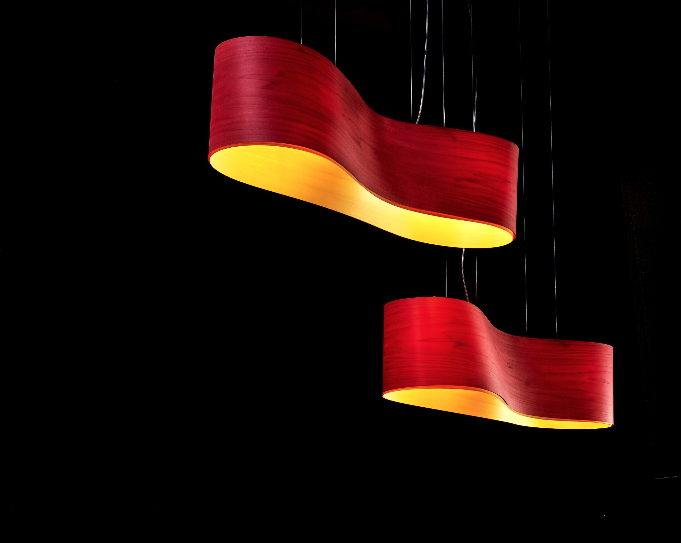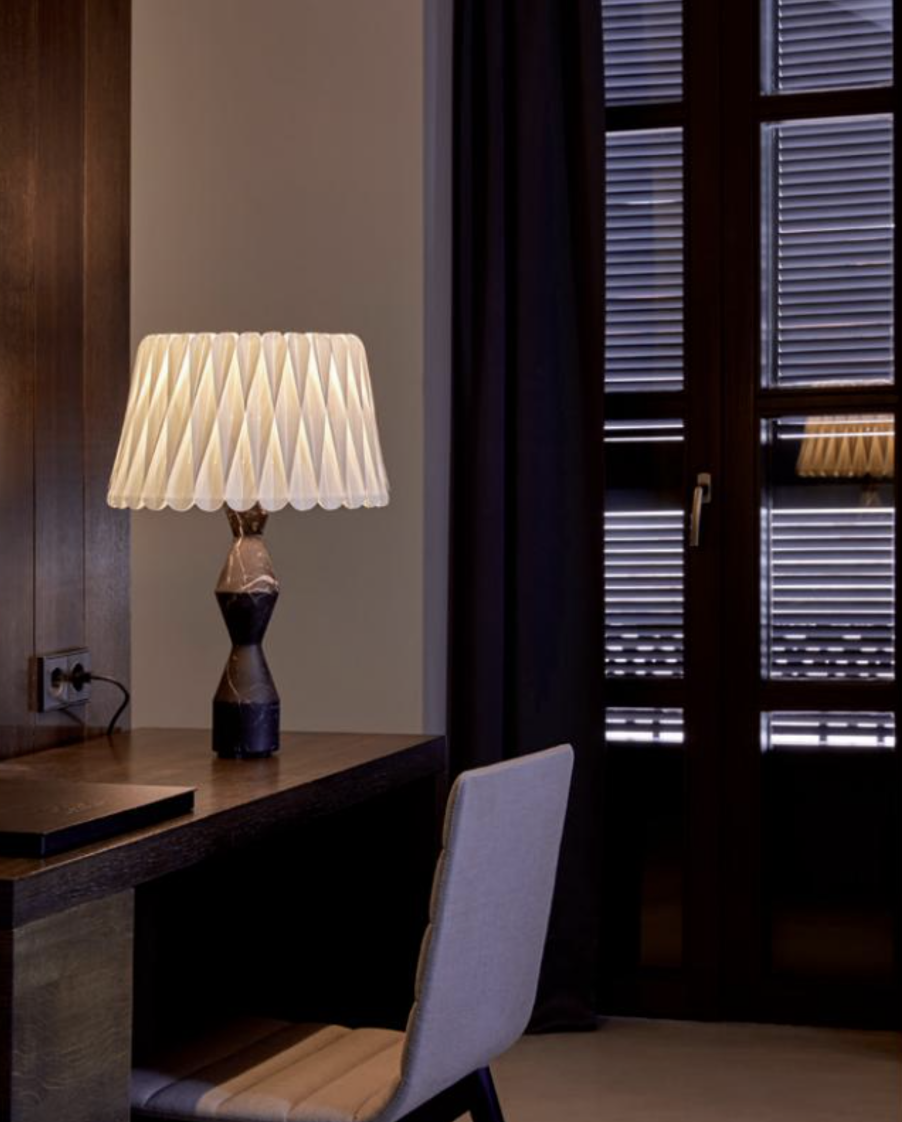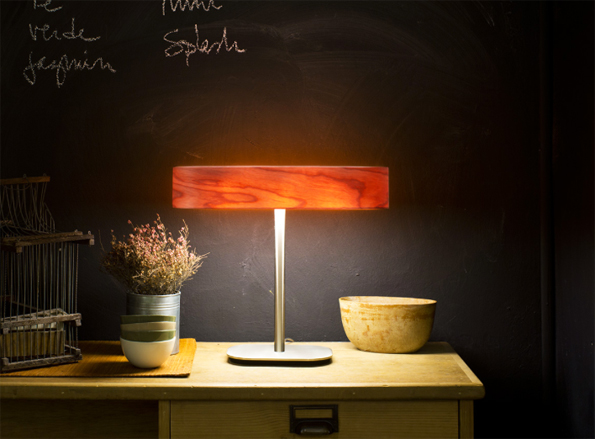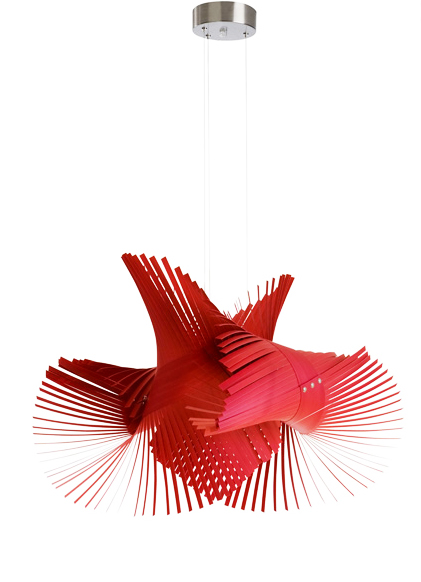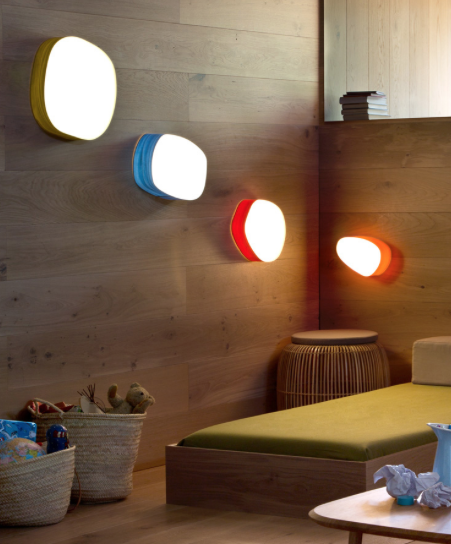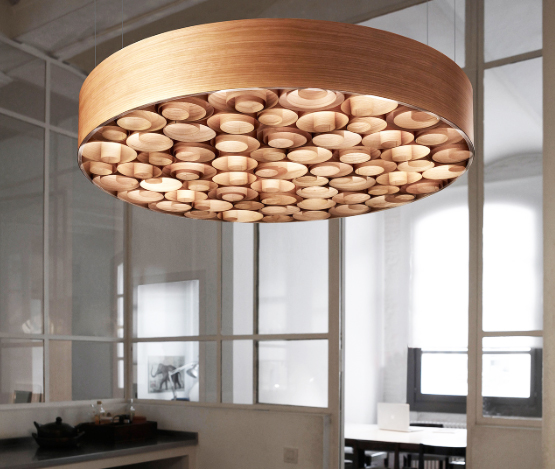LZF Lights - the most eco on the market?
Abby Trow talks to lighting designer Mariví Calvo of innovative wood veneer lighting brand LZF. She reckons the company is about as eco as it's possible for a designer brand to be.
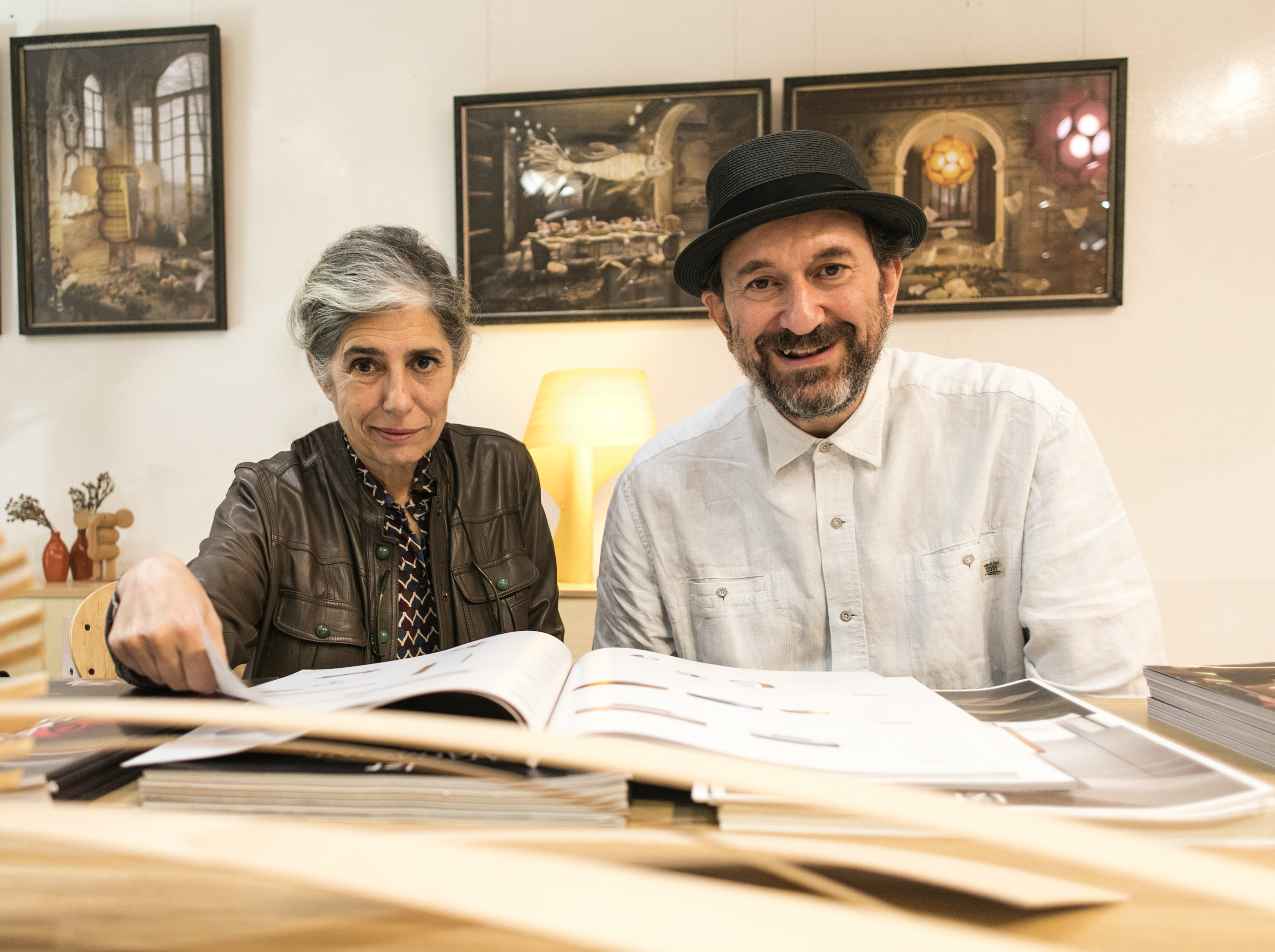
LZF is one of the most innovative and distinctive modern lighting companies, yet it's manufacturing is still done predominantly by hand. It's catchline is 'wood touched by light'; all the wood it uses is FSC-certified wood and all products are made in Spain. Pictured above: company founders Mariví Calvo and her partner Sandro Tothill
LZF is based in Valencia where its strikingly original decorative lighting products are hand-made using wood veneer. It's a highly successful company, exporting around the world and selling to both residential and contract sectors. To see the company's 2020 catalogue, see here
AT: Tell us about the qualities of wood veneer you find so inspiring.
MC: Sometimes a design inspires you to use a certain material, but in our case it was the other way around, because the material actually inspired us to design. Because we liked what we were doing and felt this so strongly, we decided that it was a wonderful thing to continue with. For us wood veneer is the most beautiful and enriching diffuser. The effect of light passing through the wood makes it seem as if the veneer is giving out its soul.
AT: But are there limitations to wood veneer in design terms?
MC: Well I guess there are, but we haven't found them; and as far as we're concerned we continue to contribute new designs and new ideas using wood veneer. That said we couldn't make an underwater lamp or an outdoor lamp particularly successfully. And we have had designers come in with projects and we've had to tell them just from looking at their design, 'sorry we can't do that in veneer', or that maybe we could manage to do the shape but the illumination would be no good.
AT: How important are environmental considerations to LZF? - do you want to be thought of as an eco- friendly manufacturer of modern lighting?
MC: When we started working we had to invent our process, and our process was handmade. From that day we have never really industrialized our manufacturing. The process is still 100 per cent hand-made, meaning that we work with our hands and we bring artisans from different walks of life - such as ceramics, shoe making, and clothes-making - into our workshop. As far as being eco goes, LZF is probably one of the most eco-friendly manufacturers of designer products here in Spain – and all our product is made in Spain. The reason being that we do all our processes by hand, we use no industrial machinery, no solvents or varnishes. In fact our whole process is completely reduced to cutting, punching and glueing - the most noxious product we use is contact glue.
Regarding the recyclability of our products, we try to keep all our products under certification. We have FSC- certification for the wood veneers we use, meaning they come from managed forests. We are not destroying any rain forests or tropical wood species with our work. Our lights come from artisanal process, which has a very low toxic output.
AT: In terms of technological developments in light sources/lamps, are they having a major impact on LZF?
MC: Let's get this straight, the easiest thing in the world and the most beautiful thing in the world, is the incandescent bulb. Two wires, a screw-in bulb and a filament. But that is the past and we are living in a world of regulations that state that fittings must be energy-efficient, that fittings must have integrated-LED circuits rather than light bulb sockets. Public buildings and contract jobs are forcing manufacturers to turn to LED as a light source. We held out while we could, but now we're converting all the way to LED. And I guess at some point we will switch to completely integrated LEDs. At the moment about 40 per cent of our products are LED. This means the other 60 per cent, instead of using incandescent bulbs, are using LED bulbs, but we can't technically call them integrated-LED lamps. So going back to the point, we had a simple beginning, but over time technological developments make things more complex, as with anything.
AT: If we can go back to 1994, why did you and your co-founder Sandro Tothill want to launch a lighting company and what was your vision for the style of product you wanted to make?
MC: We didn't actually want to start a lighting company! What we wanted to do was illuminate this amazing wood veneer we'd discovered and were working with at that time. Lighting the veneer from the inside was a spectacular way of seeing it. So really what we wanted to do was create these spectacular back-lit lighting panels and tubes - that was the initial concept. And the easiest way to do that was to put a light bulb inside the veneer.
AT: So your lights in a sense came about by accident...and if you compare your vision for your fledgling company and your vision for it now that it's much larger and well established, have there been changes or is the raison d'etre largely the same?
MC: The raison d’être is the same, to create ambiance and lighting moods through the illumination of wood veneer.
AT: You're known for quite curvaceous and elaborate designs, but some of your more recent lights have been perhaps a little plainer and more pared down – thinking about the Chou and Asterisco models. Is that because customers' tastes are changing?
MC: I do not believe that we went through a curved/curvaceous phase, or are now in a more minimalist phase. We have always done things side by side. The year we developed the Mikado and the Agatha, which are quite Baroque in nature, we also developed the Saturnias, Cuads and I-Clubs. So I wouldn't say it ́s like going through phases, but rather about the collaboration with designers and what they bring.
AT: When you've commissioned an independent designer, how involved are you with her or him during the development process?
MC: Designers are lovely people, creative, intelligent and smart. They have, in general, a world vision. But we've found they don't do anything about the inside of their designs! That is completely left up to us...
When we do accept a design, initially we take it, sign a pre-contract with the designer and then try to develop it. Most of the actual developmental work ends up happening in our offices. If we can get that design to production, the designer will then begin receiving royalties from it. If we can ́t get it to production then they won't. But it is a long process and sometimes it takes up to a year to get a piece just the way we like it. A designer need to have patience and they have to work with us. That's the key, it's about collaboration and if they can't work as a team, then we can't work with them.
AT: Covid-19 has wrought havoc on our health and economy...so are you feeling cautiously confident about LZF's future?
MC: Covid-19 is a nightmare. But at the moment we are feeling pretty confident economically. But it doesn't stop us worrying. And what I do know is the minute you're not on top of things is the minute something slips from under you.
LZF lamps are available in the UK at retailers including Do Shop, DM Lights and Spatial Lights. Prices from around £130 to £2,000

